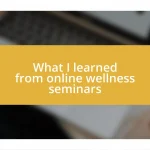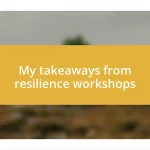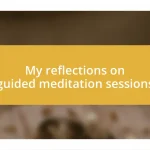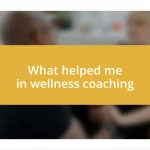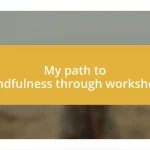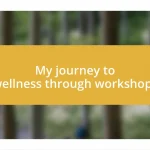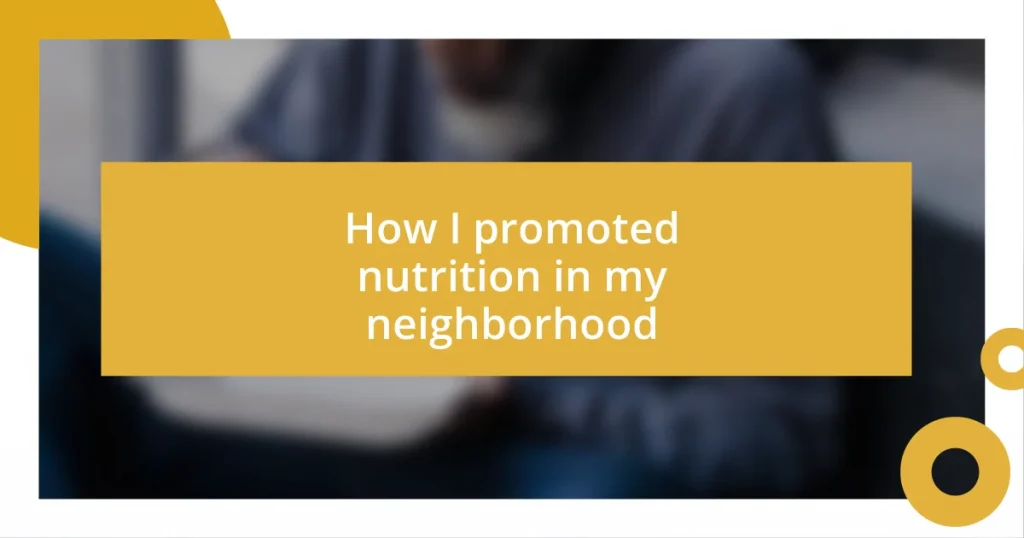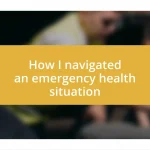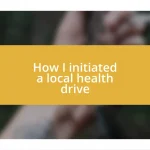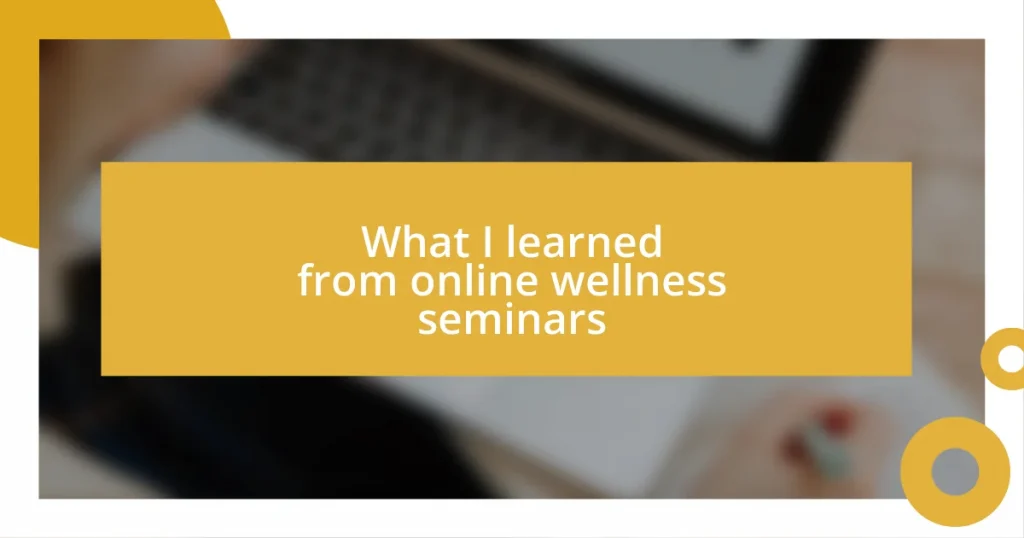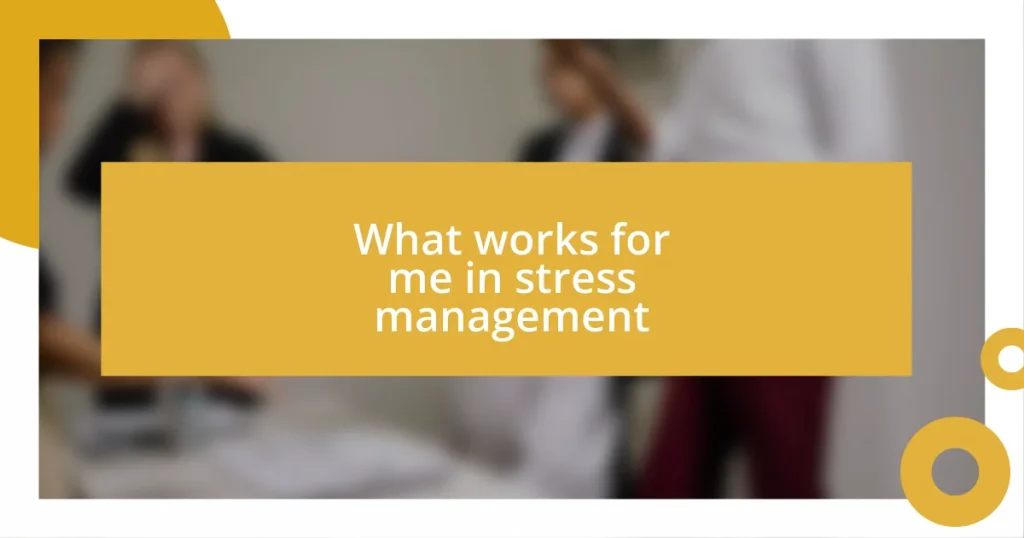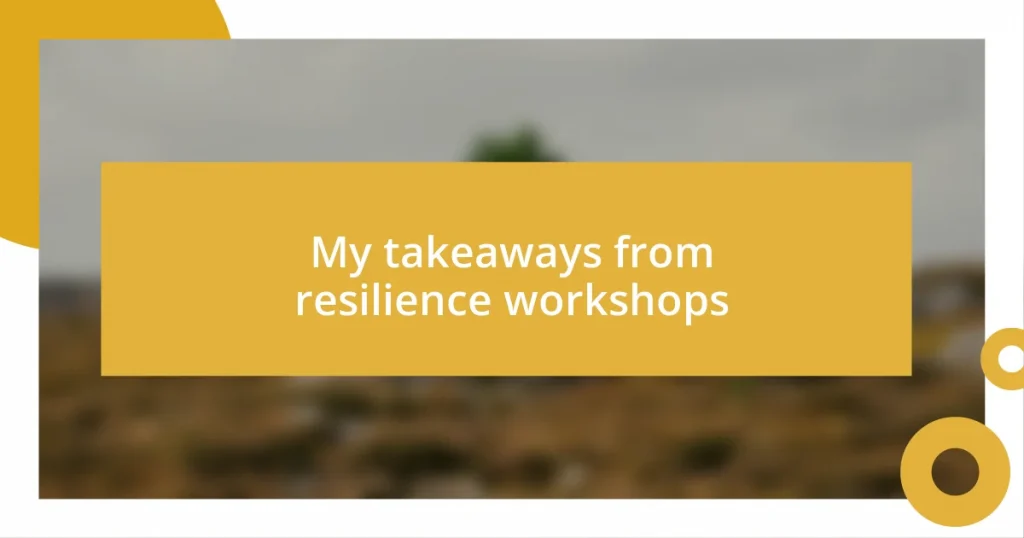Key takeaways:
- Identifying local nutrition needs led to community dialogues, revealing diverse dietary challenges and empowering residents to share their experiences.
- Building awareness through potlucks, workshops, and interactive flyers fostered engagement and education about healthy eating among neighbors.
- Collaborating with local organizations enhanced outreach and created impactful nutrition programs, emphasizing the importance of community efforts in promoting health.

Identifying local nutrition needs
When I first began exploring nutrition needs in my neighborhood, I realized how varied people’s diets were. I vividly recall a conversation with a single mother struggling to find affordable, healthy options for her kids. It struck me: how many others might be facing the same challenge?
I noticed that local grocery stores often stocked items high in sugar and low in nutrients. This observation led me to wonder, why isn’t fresh produce more accessible in our area? The imbalance made me realize that we needed to dig deeper into understanding specific dietary gaps within our community.
One day, I decided to organize a small gathering to discuss nutrition with friends and neighbors. As we shared our struggles and successes, I felt a wave of collective concern and a strong desire to improve our eating habits. Together, we opened up a dialogue about our diverse backgrounds and how they influenced our food choices. It was a powerful moment that reinforced the importance of community input in identifying local nutrition needs.

Building community awareness programs
To effectively build community awareness programs, I found creating open forums for discussion was crucial. One evening, I hosted a potluck dinner to bring neighbors together around the table. As we shared dishes from different cultures, I noticed how food sparked lively conversations. It was an eye-opener to realize that not only were we sharing recipes, but we were also exchanging insights about nutrition that many hadn’t considered before.
Here are some strategies that worked well for me in fostering awareness:
- Local Workshops: I organized hands-on cooking classes focused on healthy recipes using affordable ingredients.
- Interactive Flyers: Simple, visually appealing flyers were distributed in common areas, detailing nutrition tips and local resources.
- Community Challenges: Health-focused challenges, like “Meatless March,” engaged people and created a sense of camaraderie and commitment.
Each initiative made a difference, but it was the shared experiences that truly resonated. People began to feel empowered, not just informed, about their dietary choices.

Collaborating with local organizations
When I reached out to local organizations, I was pleasantly surprised by how eager they were to collaborate. Partnering with community centers and schools allowed us to extend our reach significantly. I recall a meeting with a local health clinic where we brainstormed nutrition workshops for families. Their expertise, combined with our grassroots efforts, created a powerful synergy that truly changed the landscape of nutrition education in the neighborhood.
In another instance, collaborating with a nearby food bank was eye-opening. They offered insights into food insecurity that I had previously overlooked. By working together, we implemented nutrition-focused programs aimed at families in need. This partnership deepened my appreciation for the role these organizations play in promoting healthy habits, demonstrating that nutrition advocacy thrives on collective effort.
Engaging with local organizations not only broadened our educational outreach but also fostered a sense of community ownership. One memorable afternoon, while volunteering at a health fair, I saw families excitedly participating in cooking demonstrations and educational sessions. It was profoundly rewarding to witness the connections we forged, reminding me that together, we could create lasting change.
| Local Organizations | Impact on Nutrition Promotion |
|---|---|
| Community Centers | Widened access to workshops and gatherings |
| Health Clinics | Provided expert insights on nutrition needs |
| Food Banks | Addressed food insecurity through education |

Hosting nutrition workshops and events
Hosting nutrition workshops and events in my neighborhood has been a transformative experience, both for me and my community members. One delightful afternoon, I organized a “Healthy Cooking Fiesta” in a local park. Together, we chopped, sautéed, and shared stories about our favorite childhood dishes. I vividly remember the laughter and the looks of surprise when I introduced quinoa; it was like introducing a new family member to a well-loved gathering. That’s the magic of these events; they turn barriers into bridges.
I also experimented with themed workshops, such as “Snacks for Energy.” I still recall the eager faces as we made no-bake energy bites with kids and their parents. The moment they took their first bites, their eyes lit up with joy. There, in that moment, wasn’t just teaching; it was creating lasting memories around healthy choices. Have you ever noticed how much more willing people are to embrace new ideas when they’re having fun? It’s a powerful realization.
Additionally, I collaborated with local chefs for special events, which added an exciting twist. On one occasion, a chef demonstrated how to make a nutrient-rich meal in under 30 minutes. Attendees were amazed at how simple it could be to prepare healthy food. I let my curiosity guide me, asking questions like, “What barriers do you face when trying to cook at home?” This sparked incredible discussions! Each event revealed that our community craved knowledge and support, and I could see the desire to change their nutrition habits take root right before my eyes.

Creating accessible resources and materials
Creating accessible resources and materials was a crucial component of my nutrition advocacy journey. One night, while sitting at my kitchen table, I decided to design easy-to-read flyers that broke down nutritional information. I wanted to empower my neighbors with knowledge that wasn’t just confined to textbooks. Seeing those flyers pinned to community bulletin boards gave me a sense of accomplishment—it felt like planting seeds of wellness in our neighborhood.
Another practical step involved developing a simple recipe booklet featuring affordable, healthy meals. Each recipe included cost estimates and cooking times, making it all the more relatable. I remember distributing these booklets during a community potluck, and the smiles on people’s faces as they flipped through the pages brought me so much joy. It was like giving them a key to unlock creativity in their own kitchens. This made me realize—why not put together resources that not only educate but also inspire action?
To further enhance accessibility, I explored digital platforms to share our materials. I created an Instagram page dedicated to nutrition tips, featuring short videos on meal prep and grocery shopping. Reflecting on the overwhelming response, I was thrilled to see comments from friends and neighbors excited to try the ideas I shared. This made me ask myself: what other innovative ways could we reach those who might not attend workshops? Embracing technology became a game-changer, offering new avenues for connection and support.

Utilizing social media for outreach
Using social media for outreach opened up exhilarating possibilities for me and my mission to promote nutrition. I remember the first time I posted a vibrant picture of a colorful salad I had whipped up, paired with a caption sharing the health benefits of each ingredient. The likes and comments rolled in, and suddenly, it wasn’t just about one meal; it felt like I was starting a dialogue with my community. Isn’t it fascinating how a single post can spark curiosity and conversations about healthy eating?
Instagram stories became a favorite tool of mine, allowing me to share quick tips and behind-the-scenes moments from my workshops. I still chuckle at the day I filmed myself making a smoothie using leftover greens; the surprised reactions from friends were priceless! They began to see healthy eating through my eyes—not as restrictive or boring but as creative and fun. This interactive format encouraged followers to send me their questions or share their own recipes, creating a vibrant community centered around nutrition.
I also hosted weekly Facebook Live sessions where we would dive into topics like meal planning and label reading. One particular session received a flood of questions, and I had a blast responding in real-time. It felt exhilarating to connect with so many people, sharing my knowledge and passion. Questions like, “What’s the best way to sneak in veggies?” led to lively discussions and even led some to share their success stories. Who knew that a little social media could build such a nourishing community?

Measuring impact and obtaining feedback
To truly gauge the impact of my nutrition initiatives, I turned to surveys and casual conversations with my neighbors. One chilly afternoon, while sipping tea with a friend, I casually asked how they felt about the nutrition tips I shared. Their candid feedback was invaluable; it opened my eyes to areas I hadn’t considered, like the need for more kid-friendly recipes. Reflecting on these interactions, I realized that listening is just as essential as sharing.
An exciting moment came when I organized a community tasting event to collect real-time feedback on some of the new dishes I introduced. I remember the beautiful chaos of that day—kids giggling, adults thoughtfully savoring each bite. As I walked around, collecting thoughts and reactions, I felt a sense of connection forming. It turned out that not everyone enjoyed the quinoa salad I loved so much, but many expressed delight in an unexpected twist to a classic pasta dish. This diversity in preferences helped me adjust future workshops to better cater to my audience’s tastes and keep them engaged.
In my journey to measure our collective progress, I also created a group chat for participants to share their experiences. One night, I received a heartfelt message from someone who hadn’t cooked much before but had decided to prepare a healthy meal for their family. They attached a photo, beaming with pride, and it struck me how far we had come together. Isn’t it incredible how simple acts of sharing feedback can spark moments of inspiration and personal growth in others? These exchanges not only provided me with essential insights but also reinforced our community bond.
